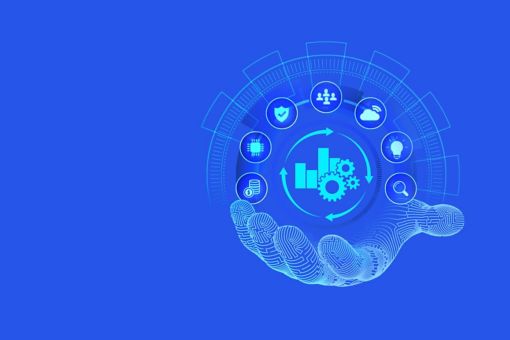Future of IT: A Canadian POV
The pandemic catalysed an upswing in technology-driven change for Canadian organizations but left a widening digital divide in its wake. Businesses that got a jumpstart on digital transformation are now much further ahead. There is clear evidence that these digital leaders adapted to the pandemic more quickly. They were faster to resume focus on pre-pandemic corporate priorities as well. Those who were caught unprepared are now urgently pivoting to achieve some level of digital parity. However, in doing so, some of those organizations risk creating new legacy, while others aggressively pursue digital advantage. While early experimentation helped digital leaders adapt and achieve, the widening digital divide has made it harder for laggards to catch up.
Setting a new pace for an adaptive future
One of the most enduring challenges for large corporations has been to align business ambitions with technology execution. As technologies evolve, business and IT leaders across industries should ask themselves whether their IT operating model is helping their business enable, accelerate and maximize value realization.
From decision making to delivery and through to operations, IT needs to work faster and more nimbly to achieve this. Our research clearly shows that digital leaders embrace market speed operating models that are dynamic, flexible, agile and collaborative. In other words, Canadian organizations can achieve outsized gains when business and IT operate together at pace, adapting to the volume and speed of relentless business and market change.
Adaptive IT operates at market speed and encompasses technology, people, processes, data, governance and underlying service delivery models. Canadian enterprises who aspire to digital leadership will need to embrace several trends to keep pace with their competitors:
5 critical areas IT is changing the marketplace
To achieve market speed, increasing numbers of organizations are embracing modern delivery techniques, including formal and informal agile techniques, such as Kanban, LEAN etc. Instead of a one-size-fits-all approach with Agile or Waterfall, digital leaders are rightsizing their processes as a function of scope, risk, impact, and cost.
For IT, this means aligning the methodology to the task at hand. For scenarios requiring deployment of large, complex, monolithic and highly structured technology (e.g., ERP), an agile approach alone might not make sense. Many digital leaders embrace hybrid approaches, where traditional and modern methods allow for an innovative balance of teaming structures, execution cadence, and incremental delivery. When exploring new capabilities, modern delivery methods support iterative delivery. This can help organizations “test and learn” quickly to balance speed, agility, risk, and maximize alignment to target their business ambitions.
Another emerging aspect of modern delivery is the DevSecOps model, which automates the connection points between Development, Security, and Operations. This provides organizations with the tools and agility to enable change quickly and efficiently. DevSecOps also helps enhance operations integrity and security, and provides increased control and compliance visibility.
Modern delivery requires new skills and more flexible engagement. Organizations that manage their own IT will need to invest differently to create and sustain leading IT capabilities. The war for talent has focused significant attention on the needs of the modern adaptive workforce. Digital leaders embrace the full spectrum of IT sourcing options to enhance their captive and traditional resource pools. This would include contractors, boutique firms, and gig workers.
Instead of having internal people managing everything, operating models are making room for new processes and skillsets and deploying them in an agile manner – precisely when they’re needed, for the specific tasks required. In tandem, they’re building new structures to support new talent and retain knowledge.
To gain speed and manage risk, digital leaders leverage data. Data capability used to be about maintaining records and connecting systems. Today, it’s about exposing information to make effective decisions quickly. Organizations and, by extension, IT teams, are now focused on data as a strategic asset – and on its potential monetization. IT is deeply bound up in the data value chain and has an increasingly critical role in protecting its integrity. To truly benefit from data as an asset, and serve the data savvy executive, organizations will need to elevate data skills across the organization.
While business and technology leaders recognize the value of the market speed operating model, problems arise when they collide with existing processes, like governance and funding. These functions are traditionally hierarchical and tightly controlled. To help enable market speed IT, digital leaders are embracing dynamic funding models, where technology is in direct support of business units and tied directly to P&L. Instead of releasing funds at fixed frequencies, organizations are enabling rolling windows of funding. This shift in IT is starting important conversations elsewhere, for instance, about the impact of shared capability on finance and investment.
The market speed IT operating model exists to enable a value driving and differentiated customer experience. The degree to which customers reward a compelling experience is contingent on trust. Customer trust is more than cyber defence and privacy compliance, it includes the perception of trustworthiness spanning the entire experience. IT therefore needs to start thinking about the end customer and about building customer trust across the whole value chain. This is a huge leap from the classic view that saw the IT function as shielding the organization from external threats. This new perspective touches every aspect of technology capabilities – from latency, to availability, to operating hours. Adaptive IT hones in on operational details that help prioritize and enhance the end-customer experience.
IT is the business
IT organizations used to look narrowly within business processes and the technology landscape to optimize parts of the business, or parts of processes. While there are many benefits to this approach, the “sum of parts” model is reaching its limit and marginal gains are diminishing. Organizations are now finding real value in connecting and transforming the business whole – and IT is a key pillar in building this value.
Businesses are connected ecosystems in which IT enables and supports every other part. No tension or collision is isolated: solving for one area without considering the whole simply moves a problem elsewhere. More and more leaders recognize that IT is a peer and partner in creating business value. IT is the business.
Technology is the means for creating business value and digital is the medium where commerce takes place. Digital leaders therefore give due consideration to how IT fits into an organization’s overall ecology. They know a piecemeal approach often leads to piecemeal solutions that shift problems more than solving them. With market speed IT, organizations are positioned to create enduring value and gain the agility to pursue new opportunities.
To learn more about how IT is changing to meet the future head on, download our report on the Future of IT, The widening digital divide:
How we can help
Insights and resources
Connect with us
Stay up to date with what matters to you
Gain access to personalized content based on your interests by signing up today
Connect with us
- Find office locations kpmg.findOfficeLocations
- kpmg.emailUs
- Social media @ KPMG kpmg.socialMedia










